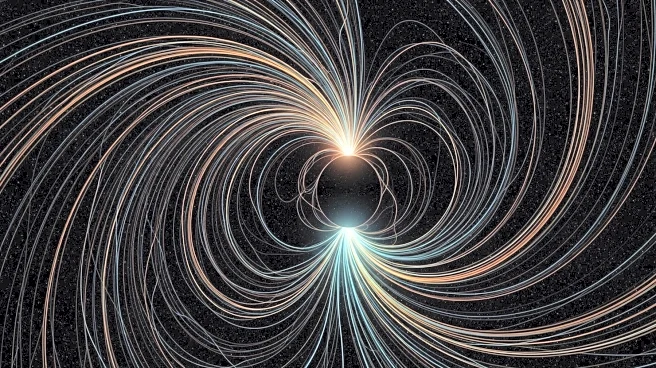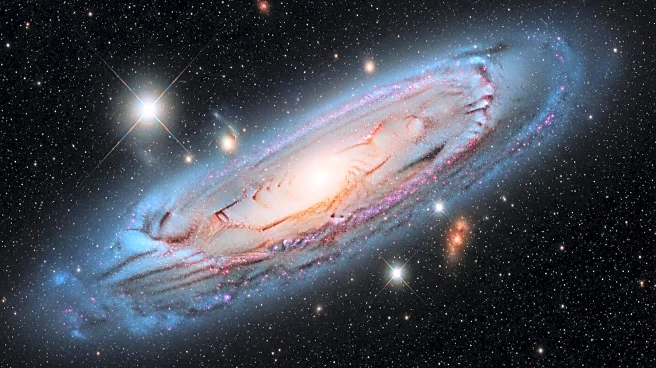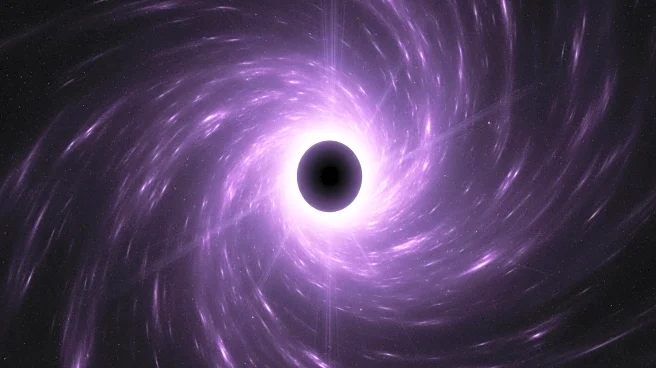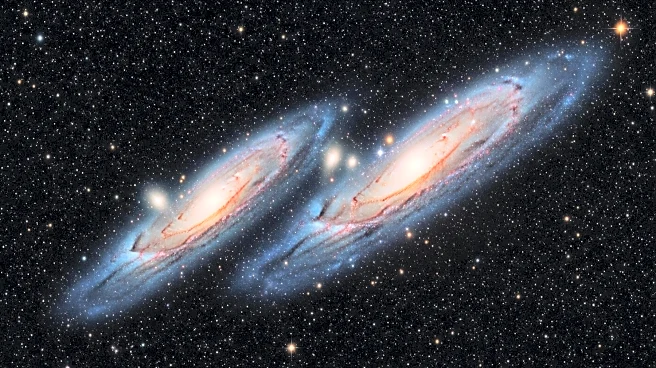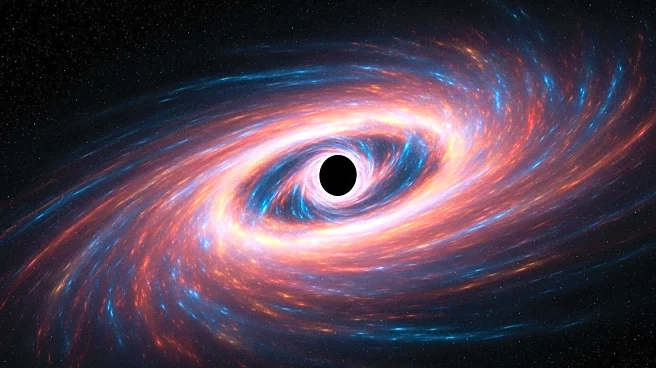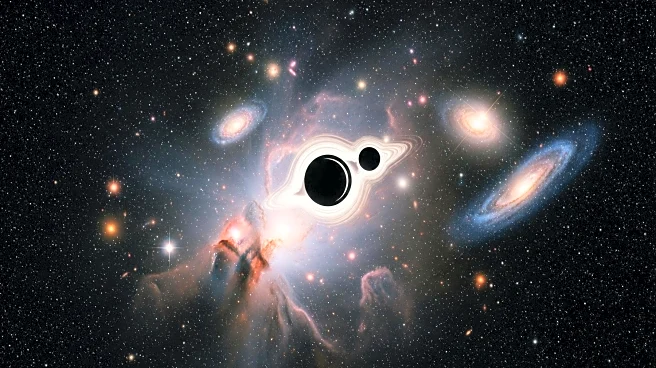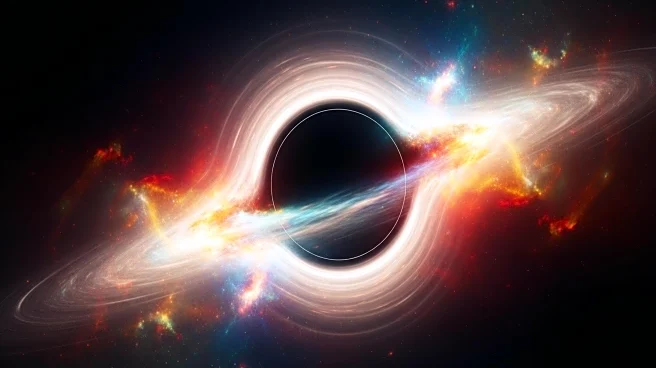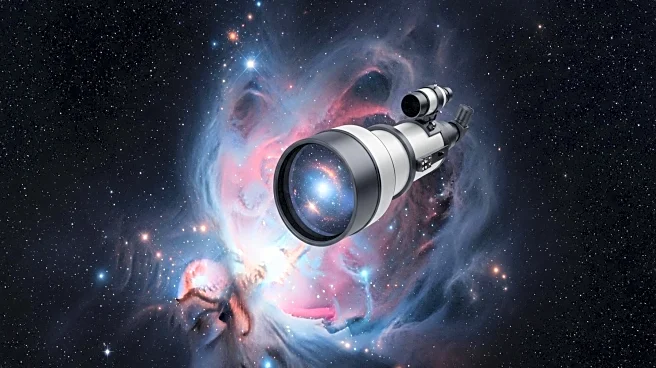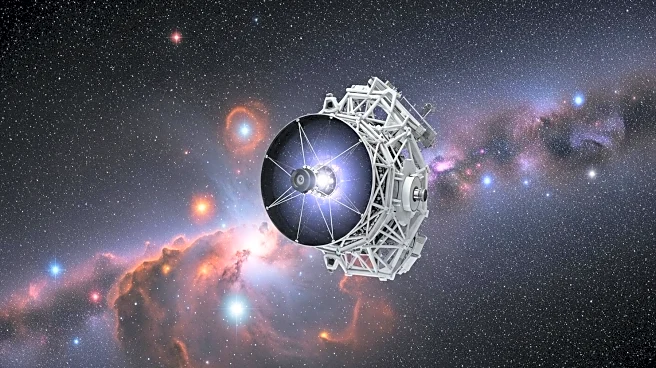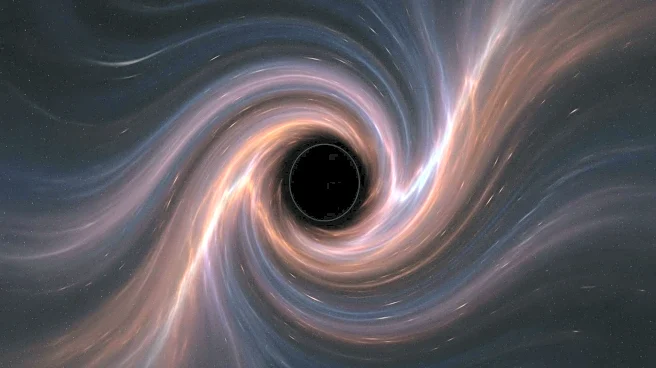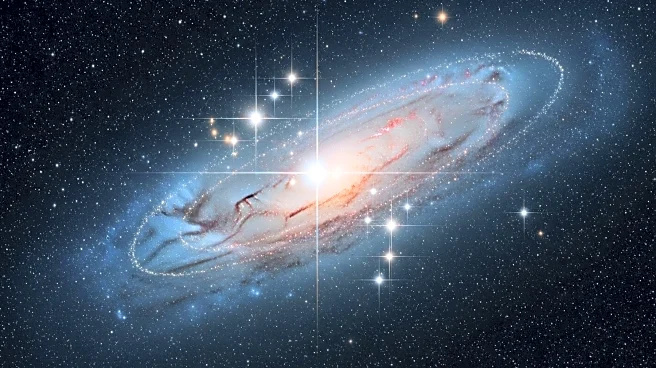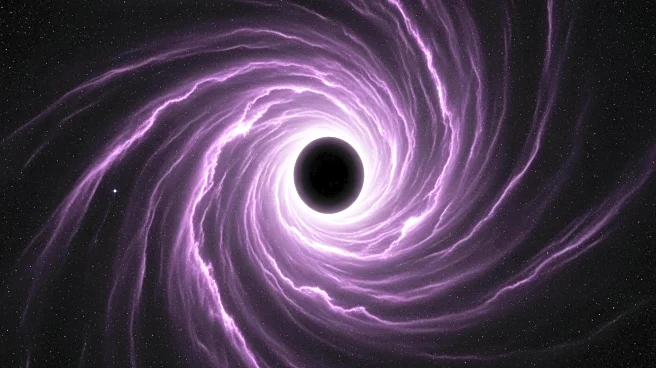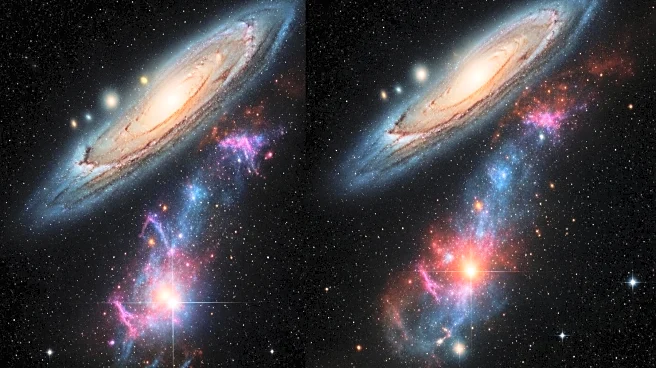What is the story about?
What's Happening?
The Event Horizon Telescope collaboration has observed significant changes in the magnetic field surrounding the supermassive black hole M87*, located 55 million light-years away. Using data collected in 2017, 2018, and 2021, scientists have mapped the polarization changes in the magnetic field, revealing a complete flip in direction over the years. This marks the first time such a change has been observed in the environment around a black hole. The findings suggest that while the black hole itself remains stable, the surrounding cosmic weather is highly dynamic. These observations are crucial for understanding how supermassive black holes feed and what powers the extreme jets they emit into intergalactic space.
Why It's Important?
The study of M87*'s magnetic field changes is significant for astrophysics as it provides insights into the behavior of supermassive black holes and their impact on their host galaxies. The jets emitted by black holes play a crucial role in shaping galaxy evolution by regulating star formation and distributing energy across vast distances. Understanding the dynamics of the magnetic fields can help refine theoretical models of black hole behavior and their interaction with surrounding matter. This research pushes the boundaries of current astrophysical theories and enhances our understanding of cosmic phenomena.
What's Next?
Future observations by the Event Horizon Telescope are planned for March and April 2026, aiming to capture the first movie of M87*. These rapid-fire observations will build on the current findings, offering deeper insights into the magnetic environment of M87* and potentially revealing more about the mechanisms behind jet formation. The ongoing research will continue to challenge and refine existing models, contributing to the broader field of time-domain black hole astrophysics.
AI Generated Content
Do you find this article useful?
